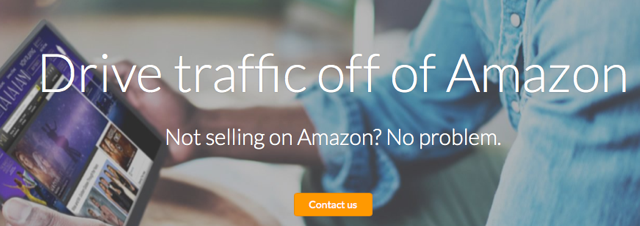
Amazon has been showing increasing interest in the digital advertising area.
Amazon, the ecommerce giant, is showing greater interest in the digital advertising arena, expanding its offerings and attracting a new type of client: big brands that advertise on television and concentrate on building favorable brand awareness rather than an immediate sale. Amazon is now assembling multiple advertising tools, akin to Google and Facebook, for brands interested in its platform.
Until recently Amazon was content to focus on driving online sales to its site by placing ads on other sites. Now it wants to become a more active player in a market — advertising — dominated by Google. Amazon is leveraging its strong relationship with brands and rich data points about the shopping behavior of its customers.
While Amazon does not break out advertising revenue, research firm eMarketer estimates that the company will generate just over $1 billion in U.S. online ad revenue in 2017. In comparison, Google’s U.S. ad revenue in 2017 is expected to reach $34 billion, while Facebook’s U.S. ad revenue will exceed $15 billion. Amazon is therefore not going to challenge the two competitors anytime soon.
However, Amazon is one of the biggest purchasers of Google advertising and that could diminish significantly. Amazon spent $5 billion on advertising last year, on Google and elsewhere.
Analyst’s View
Daniel Salmon is Internet analyst with BMO Capital Markets, an investment firm. He believes that Amazon’s new interest in advertising will likely take business away from Google, especially in the segments of retail, media, consumer electronics, and consumer packaged goods.
In a research note, Salmon stated, ”Amazon’s competitive advantage in advertising centers on the massive amount of consumer purchase data it possesses. For over 20 years, Amazon has gathered a large repository of data on consumer purchasing habits, and we believe this is what differentiates it from the advertising offerings of other companies such as Facebook and Google. While Google knows what people are searching for and Facebook knows what people are interested in and who they are connected to, Amazon knows the specific products that customers are purchasing and how frequently they are purchasing these products.”
Advertising Agencies
WPP, the world’s largest advertising agency, recently announced it would be opening an office in Seattle specifically to interface with Amazon. Ad agencies acknowledge that Amazon has unique advantages, acting as a middleman between brands and customers and the company could use its direct relationships to cut out the agencies completely. Amazon currently works with the top five international ad agencies.
Amazon Offerings
The Amazon Advertising Platform — AAP — is the demand-side platform through which Amazon buys targeted ads for its retail partners using its customer metrics. Amazon lets brands buy ads on other websites through ad exchanges managed by third-party firms. AAP lets advertisers reach Amazon shoppers on Amazon sites, across the web, and in mobile apps. The platform is available via the web and on mobile devices and comes with analytics and measurement tools. Desktop and mobile web display ads are offered along with mobile banner and interstitial (popup) ads.
In March, Amazon launched a new out-stream video ad solution, Amazon Video Ads, for advertisers that have managed accounts with Amazon Media Group — a premium advertising offering for display ads — and part of Amazon Marketing Services.
Advertisers can attract shoppers on Amazon with auto-play video while the shoppers are browsing the Amazon site across desktop, tablet, and mobile environments. Amazon is one of the few companies that have the capacity to track people across multiple devices, a crucial advantage in measuring mobile ad success.
Amazon is one of the few companies that have the capacity to track people across multiple devices, a crucial advantage in measuring mobile ad success.
On the sell-side, Amazon was a pioneer in launching server-side ad header bidding. (Header bidding is a means for publishers to offer ad inventory to multiple ad exchanges simultaneously in a direct auction and get the best prices for their ad space.) The latest enhancement is moving header bidding to the cloud — away from users’ browsers — thereby reducing load times and latency.
Amazon is not abandoning its core smaller seller advertisers. Merchants selling on the Amazon Marketplace can use self-serve sponsored ads and pay only when a shopper clicks on the ad. New keywords can be inserted during campaigns and the ads can be paused and restarted at any time. Amazon provides detailed metrics to help sellers refine ads.
In his research note Salmon advised that, “…near-term the greatest opportunity relates to its bottom-of-the-funnel direct response advertising product, Sponsored Products. Customers generally come to Amazon with the intention of making a purchase. This is very valuable to brands and sellers that want exposure to shoppers with strong purchase intent, and we believe Amazon Sponsored Products offers very attractive ROI for marketers due to this.”
Nevertheless, by 2020 the Amazon advertising model will target more big name brands, include more non-Amazon site ads, and encompass more sophisticated tools. It’s possible that Amazon’s advertising efforts will negatively affect the advertising revenues of Google and Facebook.




